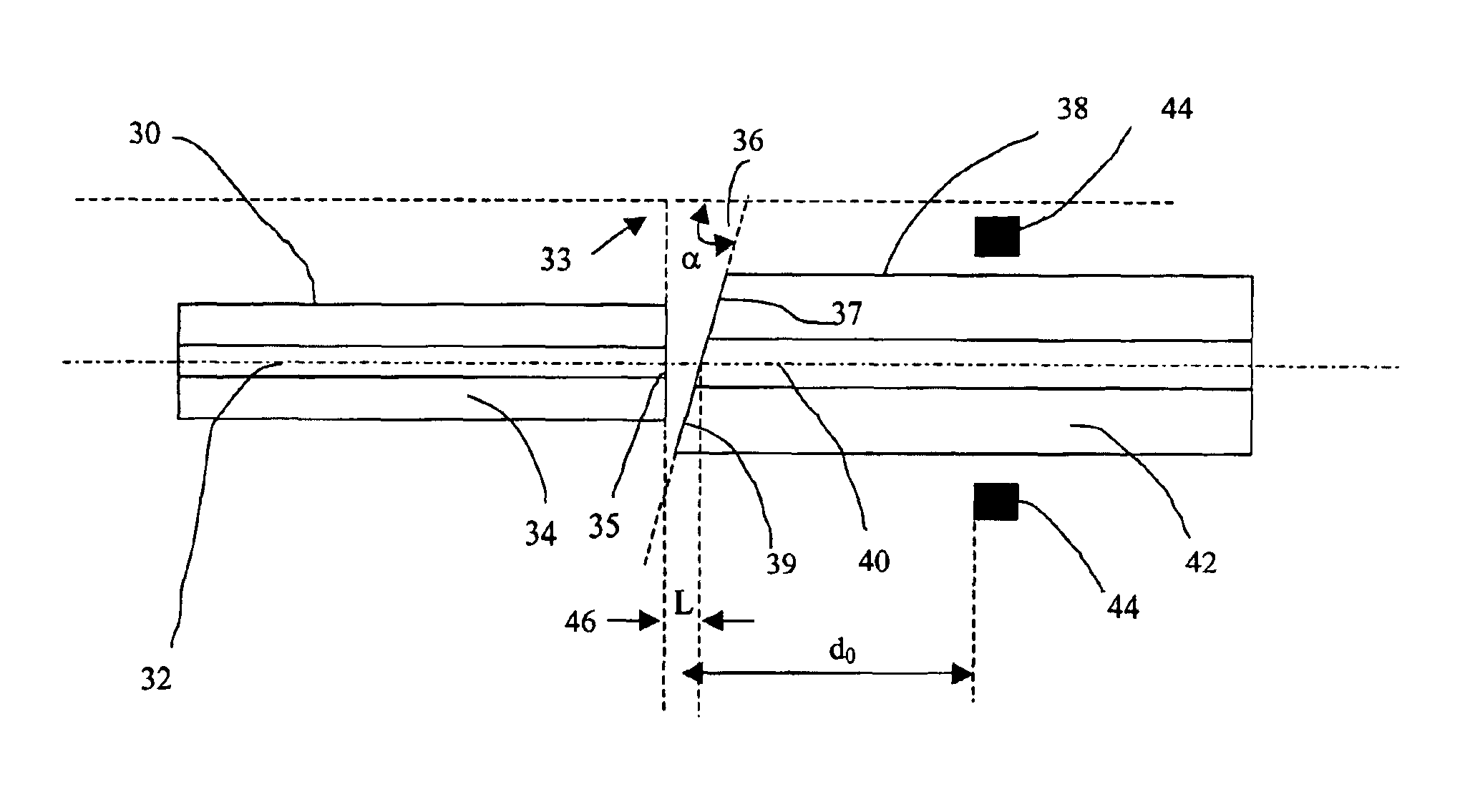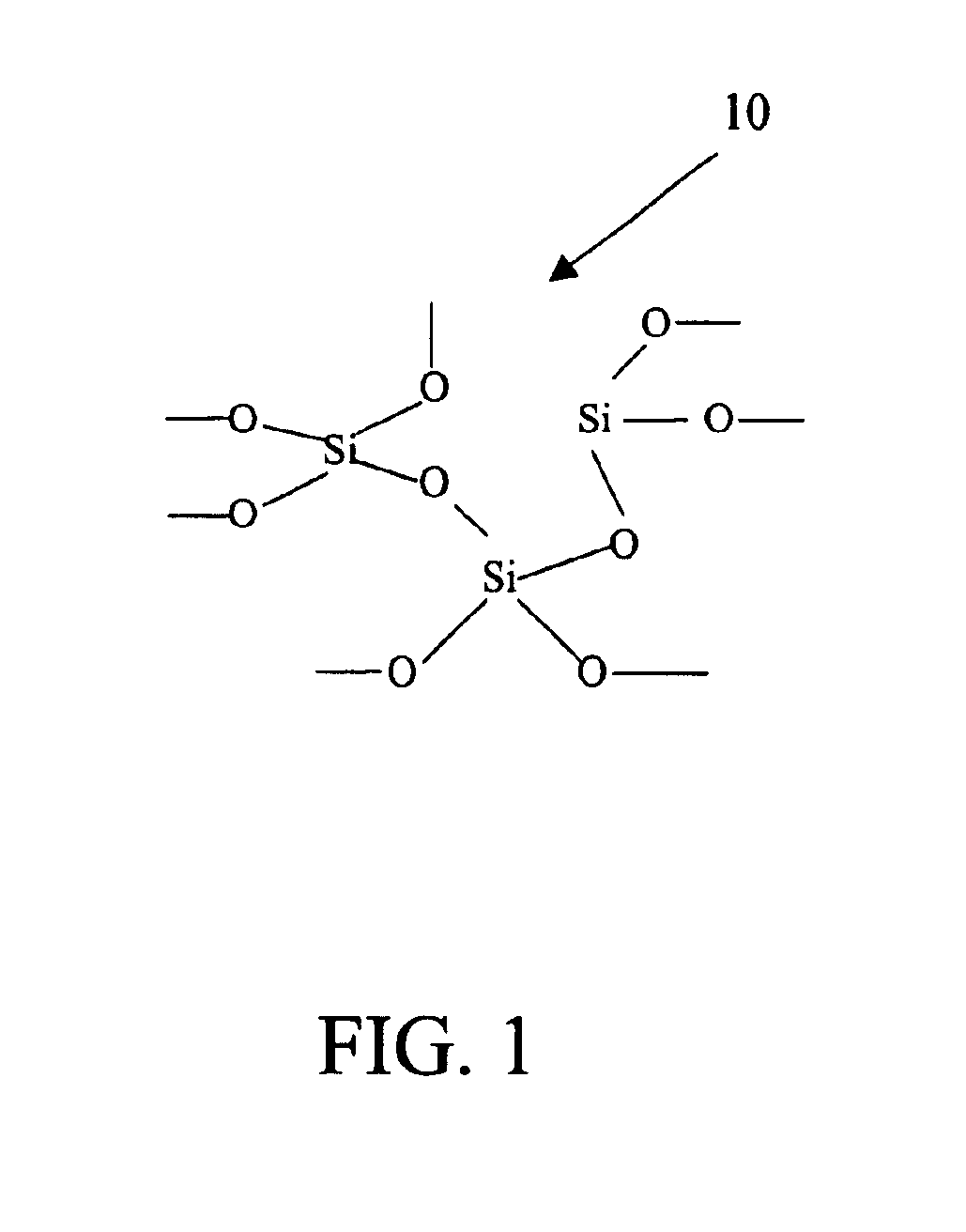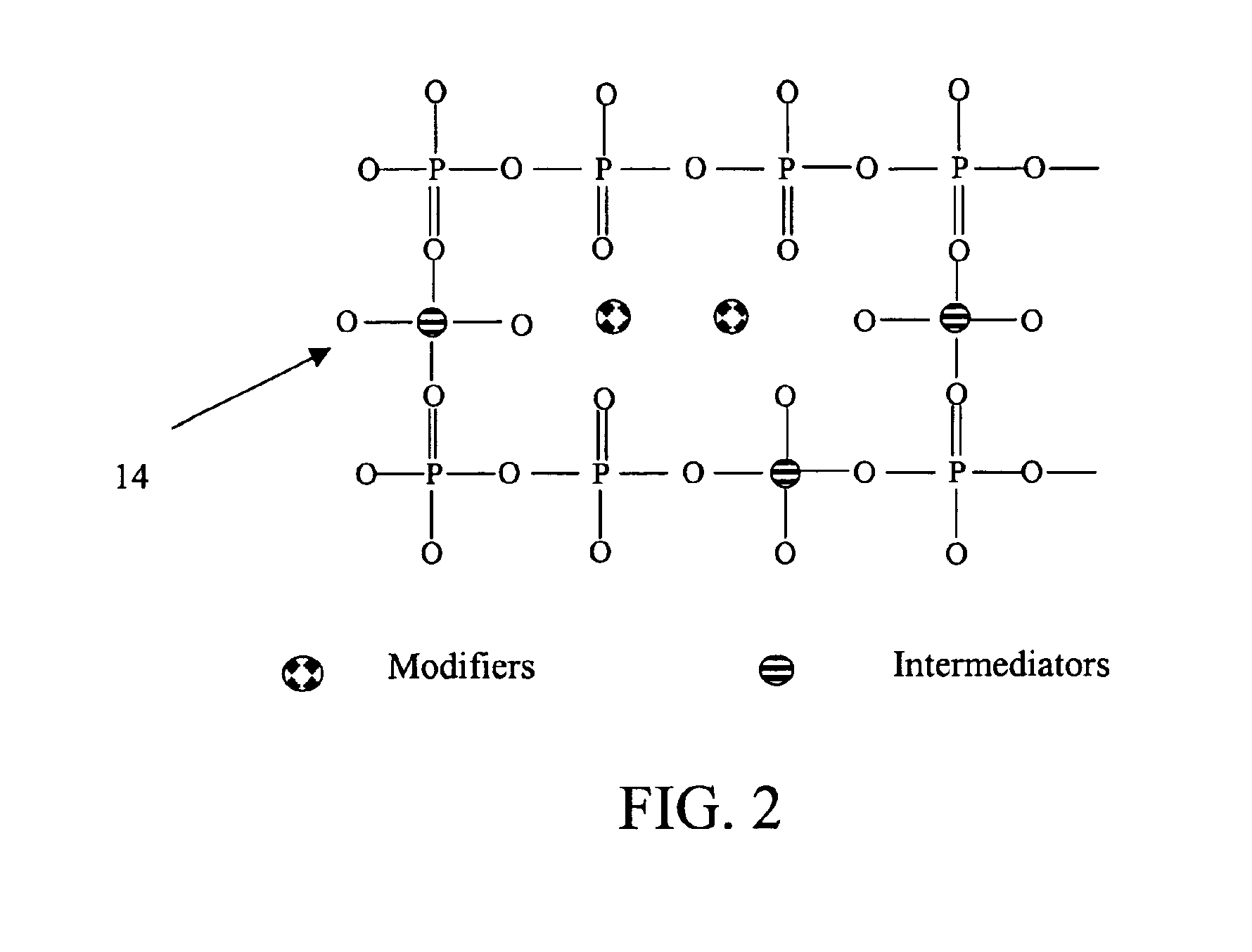Method of angle fusion splicing silica fiber with low-temperature non-silica fiber
- Summary
- Abstract
- Description
- Claims
- Application Information
AI Technical Summary
Benefits of technology
Problems solved by technology
Method used
Image
Examples
Embodiment Construction
The present invention provides a low-cost approach for providing a low loss (<0.3 dB fusion splicing loss), low back reflection (<−50 dB or lower) and mechanically robust angle-fusion splice between a standard silica fiber and a specialty low-temperature non-silica glass fiber. This type of angle fusion splice is particularly useful in and was motivated by the development of a compact EDFA. To eliminate fiber management and reduce package size one must use a glass fiber that provides high gain per unit length. This in turn dictates a glass such as a multi-component phosphate glass that has a high solubility of rare-earth dopants such as erbium and ytterbium and exhibits the necessary spectroscopic properties.
Although the method of angle fusion splicing is generally applicable to any low-temperature non-silica glass fiber, the invention will now be described in the context of angle fusion splicing a low-temperature multi-component glass fiber to a standard silica fiber.
Low-...
PUM
| Property | Measurement | Unit |
|---|---|---|
| Fraction | aaaaa | aaaaa |
| Fraction | aaaaa | aaaaa |
| Fraction | aaaaa | aaaaa |
Abstract
Description
Claims
Application Information
 Login to View More
Login to View More - R&D
- Intellectual Property
- Life Sciences
- Materials
- Tech Scout
- Unparalleled Data Quality
- Higher Quality Content
- 60% Fewer Hallucinations
Browse by: Latest US Patents, China's latest patents, Technical Efficacy Thesaurus, Application Domain, Technology Topic, Popular Technical Reports.
© 2025 PatSnap. All rights reserved.Legal|Privacy policy|Modern Slavery Act Transparency Statement|Sitemap|About US| Contact US: help@patsnap.com



